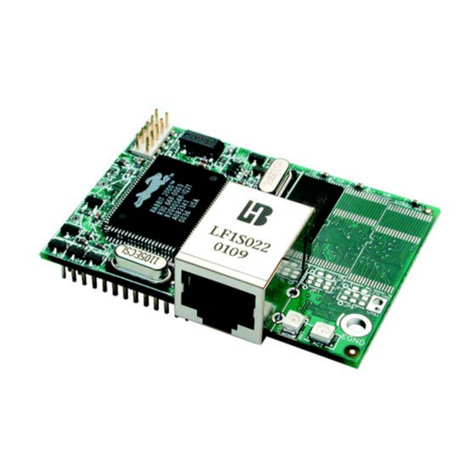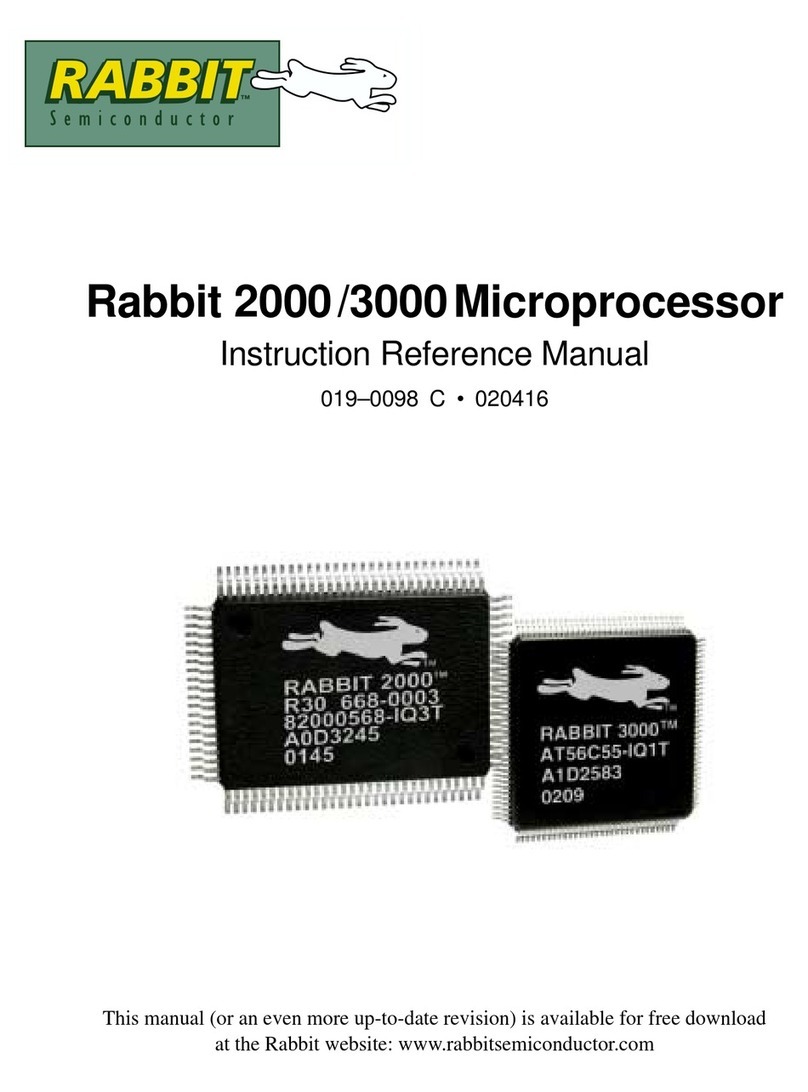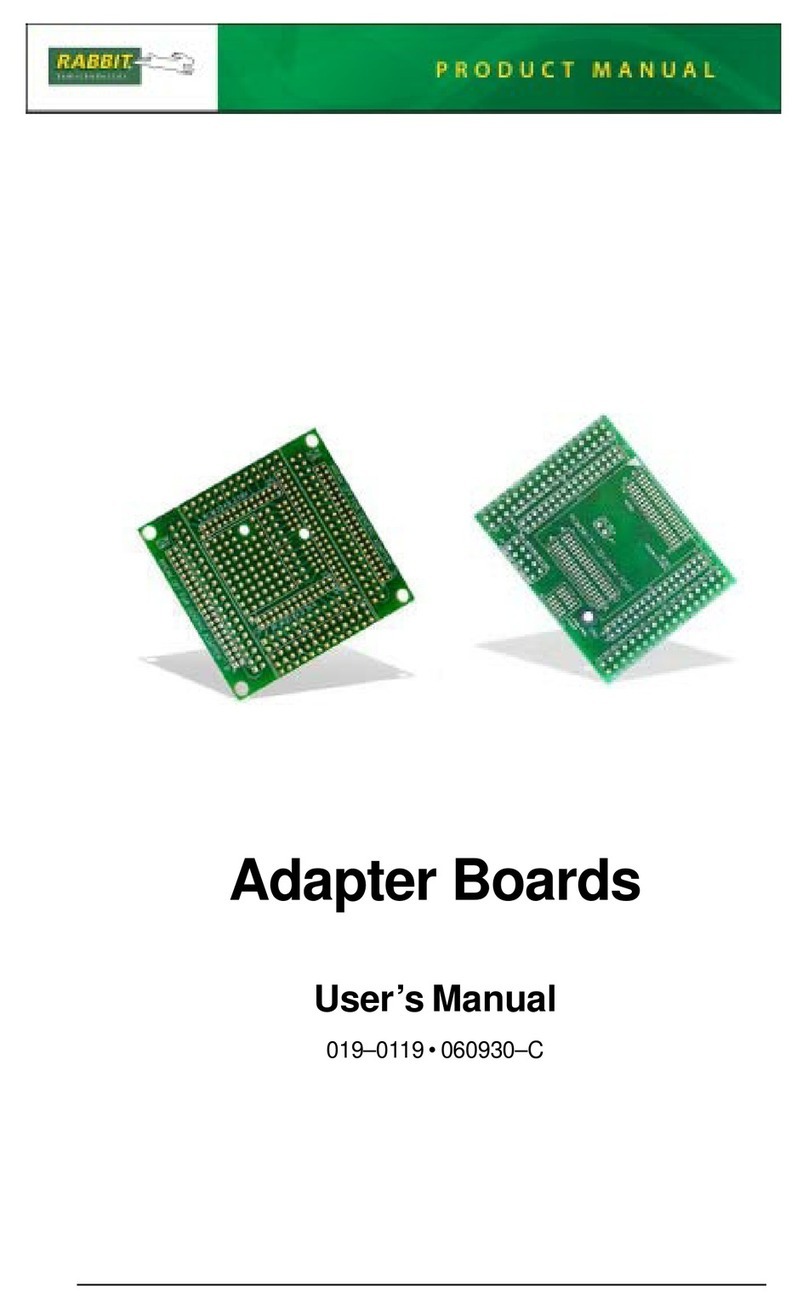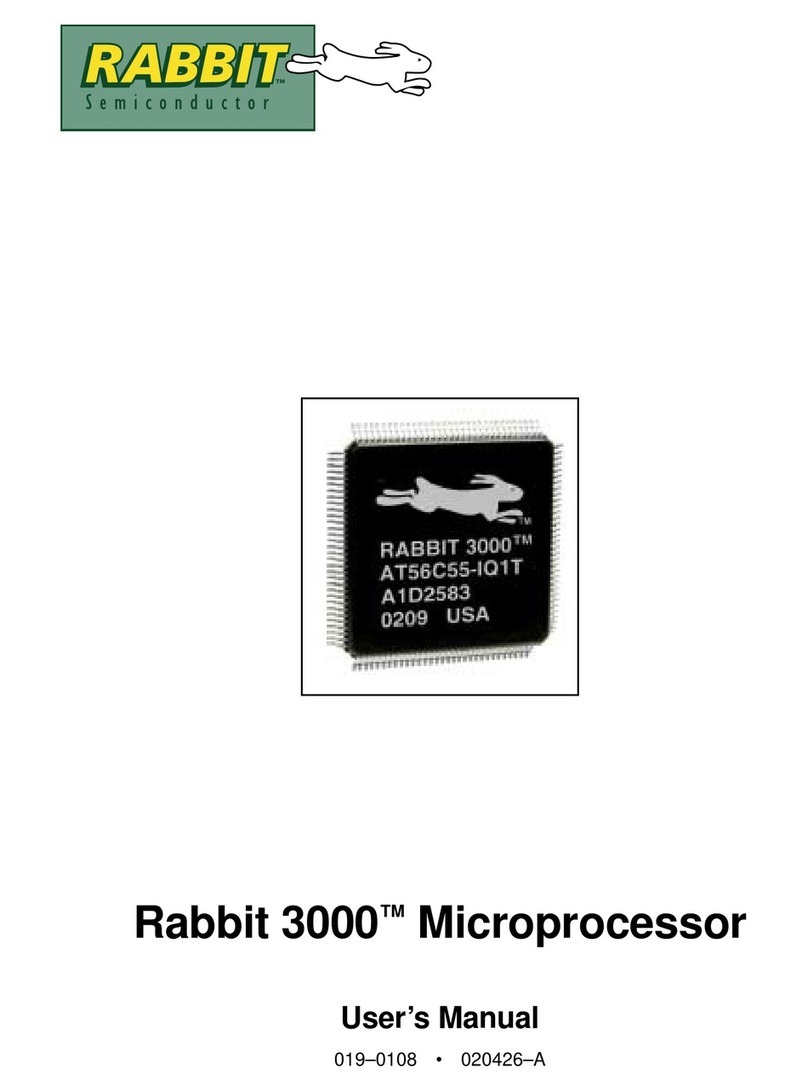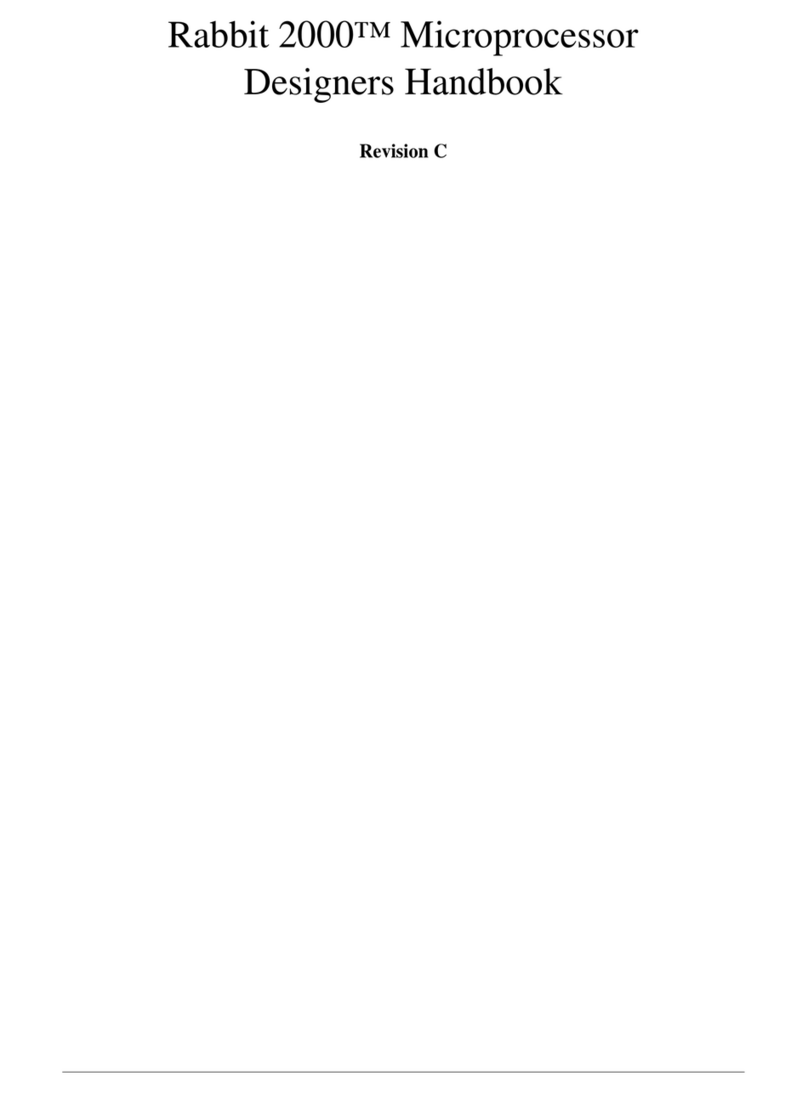
Rabbit 4000 Microprocessor User’s Manual
Chapter 21. Input Capture 219
21.1 Overview........................................................................................................................................219
21.1.1 Input-Capture Mode ..............................................................................................................219
21.1.2 Input-Count Mode .................................................................................................................220
21.1.3 Block Diagram .......................................................................................................................220
21.1.4 Registers ................................................................................................................................221
21.2 Dependencies .................................................................................................................................222
21.2.1 I/O Pins ..................................................................................................................................222
21.2.2 Clocks ....................................................................................................................................222
21.2.3 Other Registers ......................................................................................................................222
21.2.4 Interrupts ................................................................................................................................222
21.3 Operation........................................................................................................................................223
21.3.1 Input-Capture Channel ..........................................................................................................223
21.3.2 Handling Interrupts ................................................................................................................223
21.3.3 Example ISR ..........................................................................................................................223
21.3.4 Capture Mode ........................................................................................................................224
21.3.5 Count Mode ...........................................................................................................................224
21.4 Register Descriptions .....................................................................................................................225
Chapter 22. Quadrature Decoder 231
22.1 Overview........................................................................................................................................231
22.1.1 Block Diagram .......................................................................................................................233
22.1.2 Registers ................................................................................................................................233
22.2 Dependencies .................................................................................................................................234
22.2.1 I/O Pins ..................................................................................................................................234
22.2.2 Clocks ....................................................................................................................................234
22.2.3 Other Registers ......................................................................................................................234
22.2.4 Interrupts ................................................................................................................................234
22.3 Operation........................................................................................................................................235
22.3.1 Handling Interrupts ................................................................................................................235
22.3.2 Example ISR ..........................................................................................................................235
22.4 Register Descriptions .....................................................................................................................236
Chapter 23. Pulse Width Modulator 239
23.1 Overview........................................................................................................................................239
23.1.1 Block Diagram .......................................................................................................................241
23.1.2 Registers ................................................................................................................................241
23.2 Dependencies .................................................................................................................................242
23.2.1 I/O Pins ..................................................................................................................................242
23.2.2 Clocks ....................................................................................................................................242
23.2.3 Other Registers ......................................................................................................................242
23.2.4 Interrupts ................................................................................................................................242
23.3 Operation........................................................................................................................................243
23.3.1 Handling Interrupts ................................................................................................................243
23.3.2 Example ISR ..........................................................................................................................243
23.4 Register Descriptions .....................................................................................................................244
Chapter 24. External I/O Control 247
24.1 Overview........................................................................................................................................247
24.1.1 Auxiliary I/O Bus ..................................................................................................................247
24.1.2 I/O Strobes .............................................................................................................................248
24.1.3 I/O Handshake .......................................................................................................................249
24.1.4 Block Diagram .......................................................................................................................250
24.1.5 Registers ................................................................................................................................250
24.2 Dependencies .................................................................................................................................251
24.2.1 I/O Pins ..................................................................................................................................251
24.2.2 Clocks ....................................................................................................................................251
24.2.3 Other Registers ......................................................................................................................251
24.2.4 Interrupts ................................................................................................................................251
